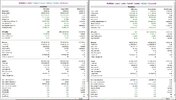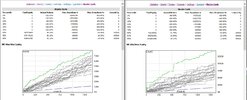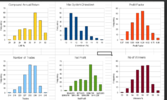- Joined
- 30 May 2017
- Posts
- 2,513
- Reactions
- 4,140
There is no perfect balance or a magic indicator that pinpoints the exact top to sell out of the market and exact bottom to get back in.definitely agree with you there. you need to define system rules in that respect as to what constitutes a reason to turn it off. there are some fantastic discretionary traders here who do the same thing as well, and if you follow there thread they perform amazingly. the point being that the decisions are still based on rules. i think new traders should be careful and have some rules about what would constitute certain market conditions.
not sure about the others here, but if i'm exploring some ideas i code up some ideas and see if the basic premise works. thats easy. the hard part is determine filters (market condition statements) to turn it on/off and striking a balance between being in the market to take advantage of any rebound and avoid being in a potentially downward market (or being exposed to unnecessary risk). you will sacrifice some profit to reduce your DD. it then becomes a balancing act of finding a level of risk you are comfortable with, but also having a profit that makes your time (and capital) worth it.
let me know if any of you perfect this balance. i'm still trying to figure it out, haha.
I personally don't use anything complicated. A longer term moving average or the crossover of shorter term moving averages is about as complex as I get to gauge the market direction.
During downturns, although there are no new buy trades placed on the market, company research doesn't stop. In fact I find it a productive time to spend time researching great companies as you'll be able to buy in at bargain prices once the bear market has discounted them.







